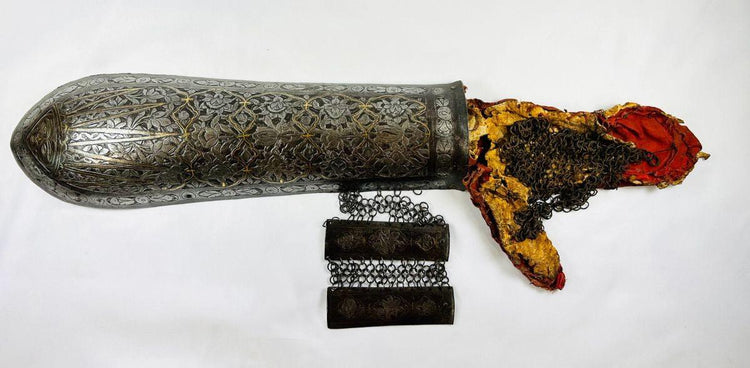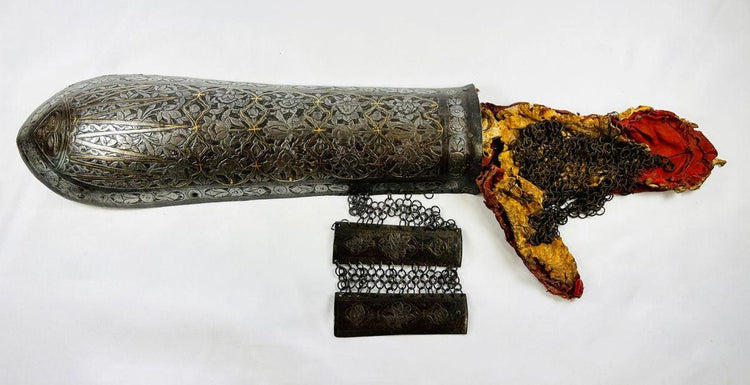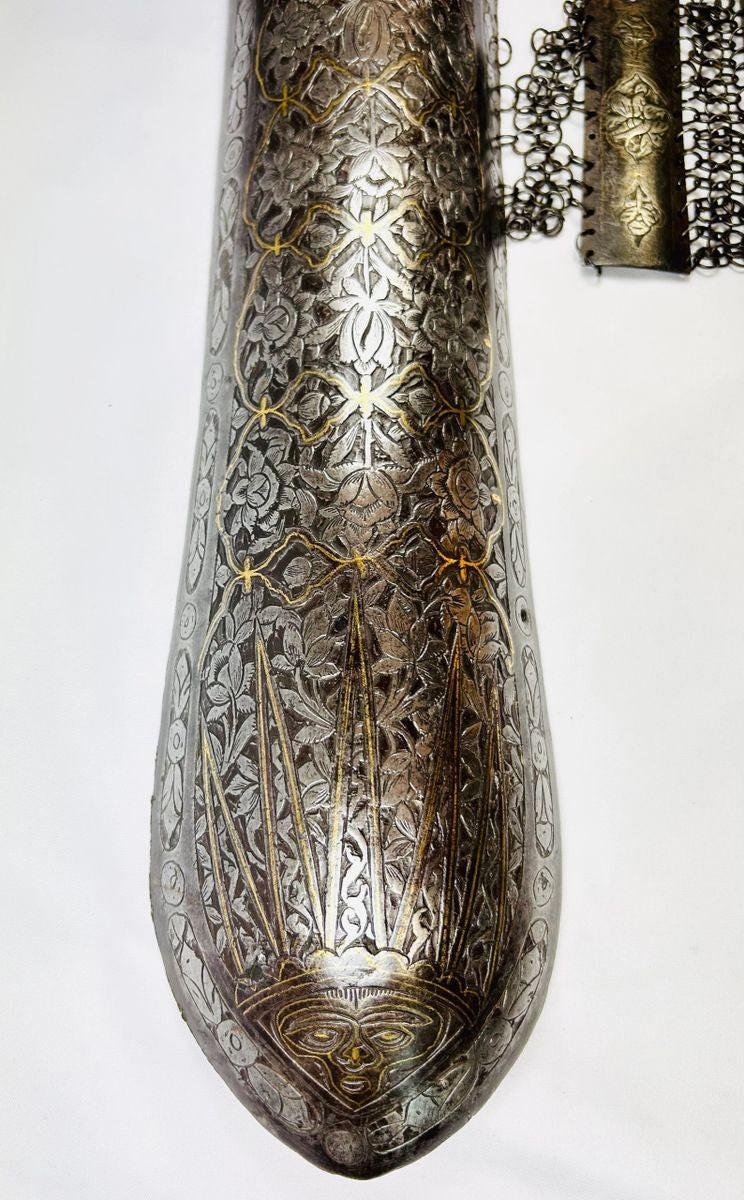Qajar Persian Warrior Arm Guard | Gold Koftgari Steel Armor Cuff | Circa 19th Century
Description
More
Less
Historical Context & Origin
Region: Persia (Iran)
Material: Steel with gold koftgari inlay, chain-mail, and fabric lining
Period: Qajar Dynasty, 1789–1925 CE
Description
This Persian warrior’s bazu band (arm guard) is a striking example of Qajar-era armor, crafted in steel with intricate gold koftgari (damascene) inlay. The band retains its original chain-mail lining and rare red fabric interior, both enhancing its authenticity and historical value. Designed to protect the forearm in battle, the piece balances functionality with artistic embellishment, reflecting the prestige of its elite wearer.
Features
- Gold koftgari inlay forming ornate patterns on steel
- Original chain-mail lining for added protection
- Rare surviving red fabric lining
- Complete condition, unusual for Qajar-period armor
Cultural Significance
During the Qajar dynasty, richly decorated armor symbolized both military function and social status. Warriors of rank wore finely embellished pieces like this bazu band, combining battlefield utility with artistic refinement. Koftgari decoration was a hallmark of Persian metalwork, showcasing mastery in luxury craftsmanship while emphasizing the power and prestige of the Qajar elite.
Condition
Excellent preserved condition with original gold inlay, chain-mail, and fabric intact. Minor wear consistent with age and use, reinforcing its authenticity as a functional piece of armor.
Dimensions (approximate)
Length: 11.5 in
Width: 4.5 in
Age
19th Century CE
Learn More
View More of This Type of Armour From The Wallace Collection
Explore Our Entire Collection of Warfare Artifacts
Dive into the “Study of Kashan Metalworking During Qajar Dynasty” to understand the cultural and religious motifs behind Qajar metalwork.
Description
Historical Context & Origin
Region: Persia (Iran)
Material: Steel with gold koftgari inlay, chain-mail, and fabric lining
Period: Qajar Dynasty, 1789–1925 CE
Description
This Persian warrior’s bazu band (arm guard) is a striking example of Qajar-era armor, crafted in steel with intricate gold koftgari (damascene) inlay. The band retains its original chain-mail lining and rare red fabric interior, both enhancing its authenticity and historical value. Designed to protect the forearm in battle, the piece balances functionality with artistic embellishment, reflecting the prestige of its elite wearer.
Features
- Gold koftgari inlay forming ornate patterns on steel
- Original chain-mail lining for added protection
- Rare surviving red fabric lining
- Complete condition, unusual for Qajar-period armor
Cultural Significance
During the Qajar dynasty, richly decorated armor symbolized both military function and social status. Warriors of rank wore finely embellished pieces like this bazu band, combining battlefield utility with artistic refinement. Koftgari decoration was a hallmark of Persian metalwork, showcasing mastery in luxury craftsmanship while emphasizing the power and prestige of the Qajar elite.
Condition
Excellent preserved condition with original gold inlay, chain-mail, and fabric intact. Minor wear consistent with age and use, reinforcing its authenticity as a functional piece of armor.
Dimensions (approximate)
Length: 11.5 in
Width: 4.5 in
Age
19th Century CE
Learn More
View More of This Type of Armour From The Wallace Collection
Explore Our Entire Collection of Warfare Artifacts
Dive into the “Study of Kashan Metalworking During Qajar Dynasty” to understand the cultural and religious motifs behind Qajar metalwork.
You May Also Like




















